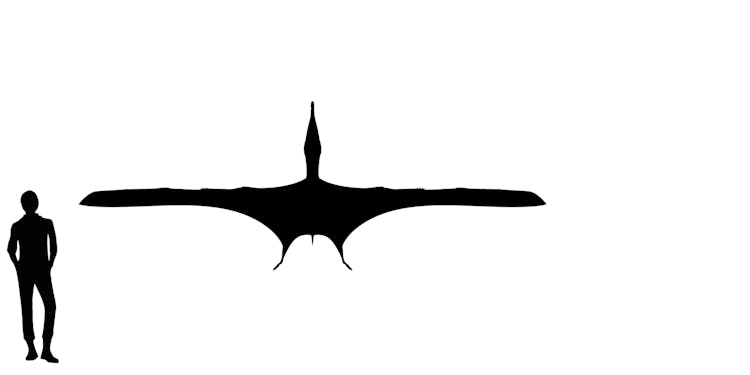


The old image of crested and toothed pterodactyloids has made a triumphant return with discoveries like Caulkicephalus. A combination of large size, a big crest and a set of wicked-looking teeth may have made this pterosaur seem downright dragon-like in aspect, yet it was far from being a hunter of big vertebrates. It actually preyed on fish and other slippery aquatic prey, using its interlocking teeth as a trap to prevent its victims from escaping.
A number of pterosaurs evolved this prey capture method many times over and the largest of the toothed pterosaurs used this to their fullest advantage. Caulkicephalus belongs to a family known as the ornithocheirids, a group of advanced pterodactyloids with an almost exclusively Cretaceous stratigraphy. Not only were they the biggest to possess teeth but they were also the last to do so. They emerged during the start of the Early Cretaceous and went extinct midway through the period, thus leaving only their toothless pteranodontid and nyctosaurid relatives as the chief marine aviators. In general, ornithocheiroids may have been incredible flyers but not as comfortable on land. Their torsos and hind legs were short while their wings were incredibly long in proportion. Yet these disproportionate bodies were packed to bursting with impressive muscles. Ornithocheirids were masters of hunting above the waves.
Caulkicephalus trimicrodon, or "Caulkhead with three small teeth," was found on the Isle of Wight's Wessex Formation. The genus name is a reference to the people of the Isle of Wight, a kind of nickname. This is one of England's richest and largest dinosaur fossil beds and one of the best Early Cretaceous beds in Europe.
These fossils do not preserve a marine habitat but a freshwater floodplain and forest ecosystem filled with impressive dinosaurs and other animals. They date back to the Barremian Stage, roughly 130 million years ago. Fossils of Caulkicephalus were discovered between 1995 and 2003 in a location called Yaverland, part of the Wessex. The animal was named two years later by a team comprising of David Martill, David Unwin, John Winch and Lorna Steel. The remains include parts of the snout and skull, which allows for such a detailed reconstruction of the animal. Caulkicephalus' fossils also showed that it had a keel-like crest at the tip of its jaws, similar to almost all other ornithocheirids. This combination of features made it quite impressive indeed, and with a 5-meter wingspan, it was no pushover in terms of size either.
